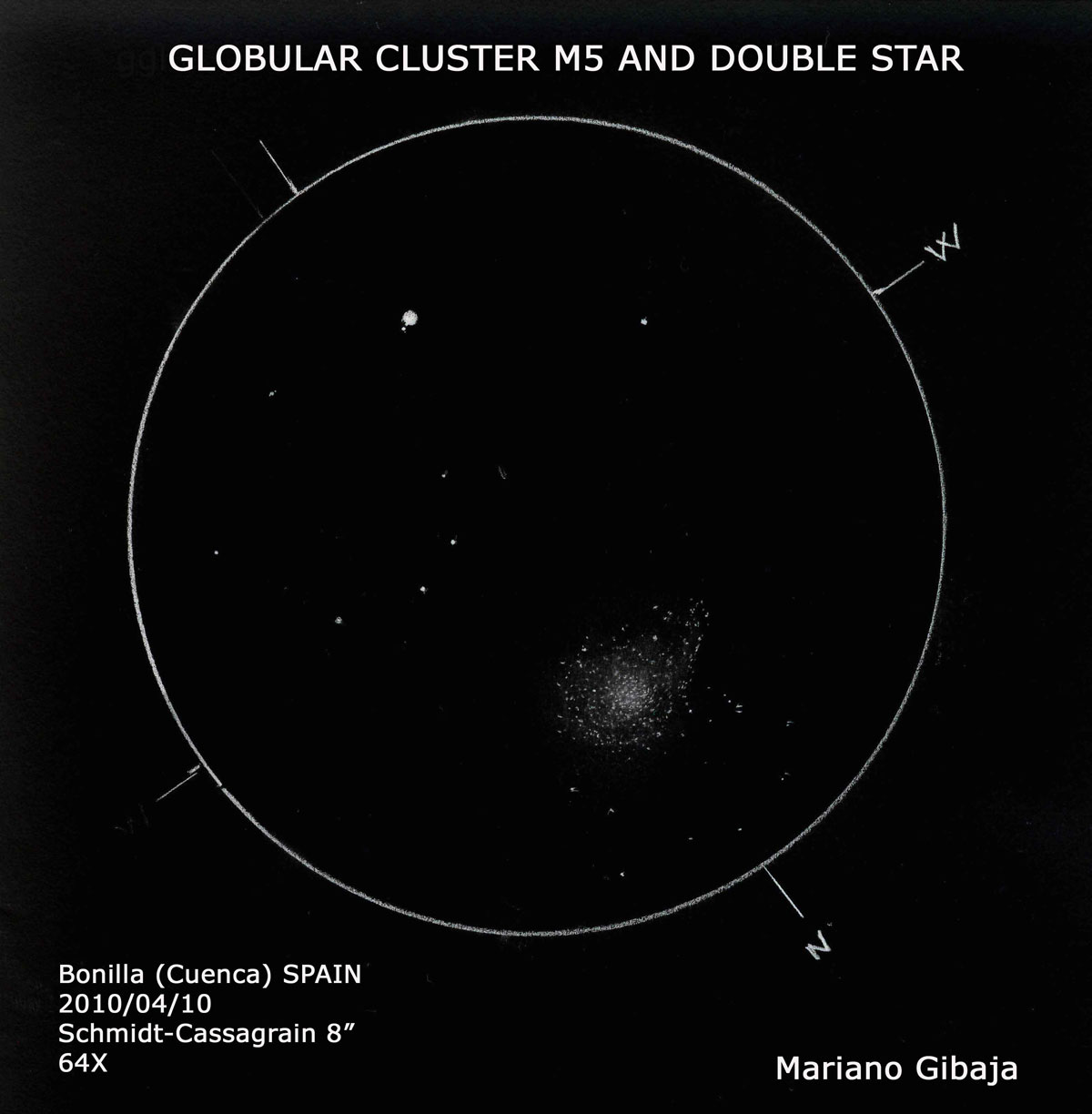
Messier 5 and STF 1930
Sketch and Details by Mariano Gibaja
Object Name: M 5 (NGC5904) and STF 1930 in Serpens constellation.
Object Type: (Globular Cluster/Double Star)
Location: Bonilla (Cuenca) SPAIN
Date: 2010-April-10; UT: 23;30
Medium used: Graphite pencil one white paper. Photoshop:inverted
Equipment used: SCT 8″ (64X)
The observation of this globular cluster is very rewarding. It finds itself
in Serpens’ constellation, approximately 25.000 light years away. M5 and M13
are the two most brilliant globular cluster in the northern hemisphere. It
has a very thick core and it can be observed how ramifications of starts
have their origin in it, the famous ‘spider legs’ that give to the cluster
its elliptical shape. The image of this beautiful cluster is completed with
the star 5 SER, with a magnitude of 5. But actually, if we observe closely
we can see that it is a double star. In this case it is the STF 1930, make
up of the star of magnitude 5 and its partner of magnitude 10, with a
separation of 11,4”.
I have done this draft in the observation area of the Astronomical
Association of Madrid (Agrupación Astronómica de Madrid) in Bonilla, Cuenca.
The weather was good and the temperature was around 3º C.
Do not miss the spectacle that this globular is offering and that will be
with us during the warm summer nights.
Mariano,
I consider this globular cluster to be ideal and your sketch of it is the true eyepiece view. It has a bright dense core and the stars radiate out like the blades of a pinwheel. Superb work.
Frank
Mariano.
That is a lovely piece of work.
Scott.
The wonderful drawing emphasizes exactly why M5 is sometimes called “The Rose”. The stars are arranged in arcs resembling the appearance of a rose from above.
Thank you very much for your comments. It’s a great motivation to make new drawings. Thanks to ASOD for publishing my work.
Hi Mariano,
Your sketch captured M5 perfectly; it’s always great to compare sketches from different observers and I find my own (much less artistic) sketch of this last year agreeing nicely with yours. http://img199.imageshack.us/img199/6071/m529thmay09.jpg
Peter
Simply amazing o.O